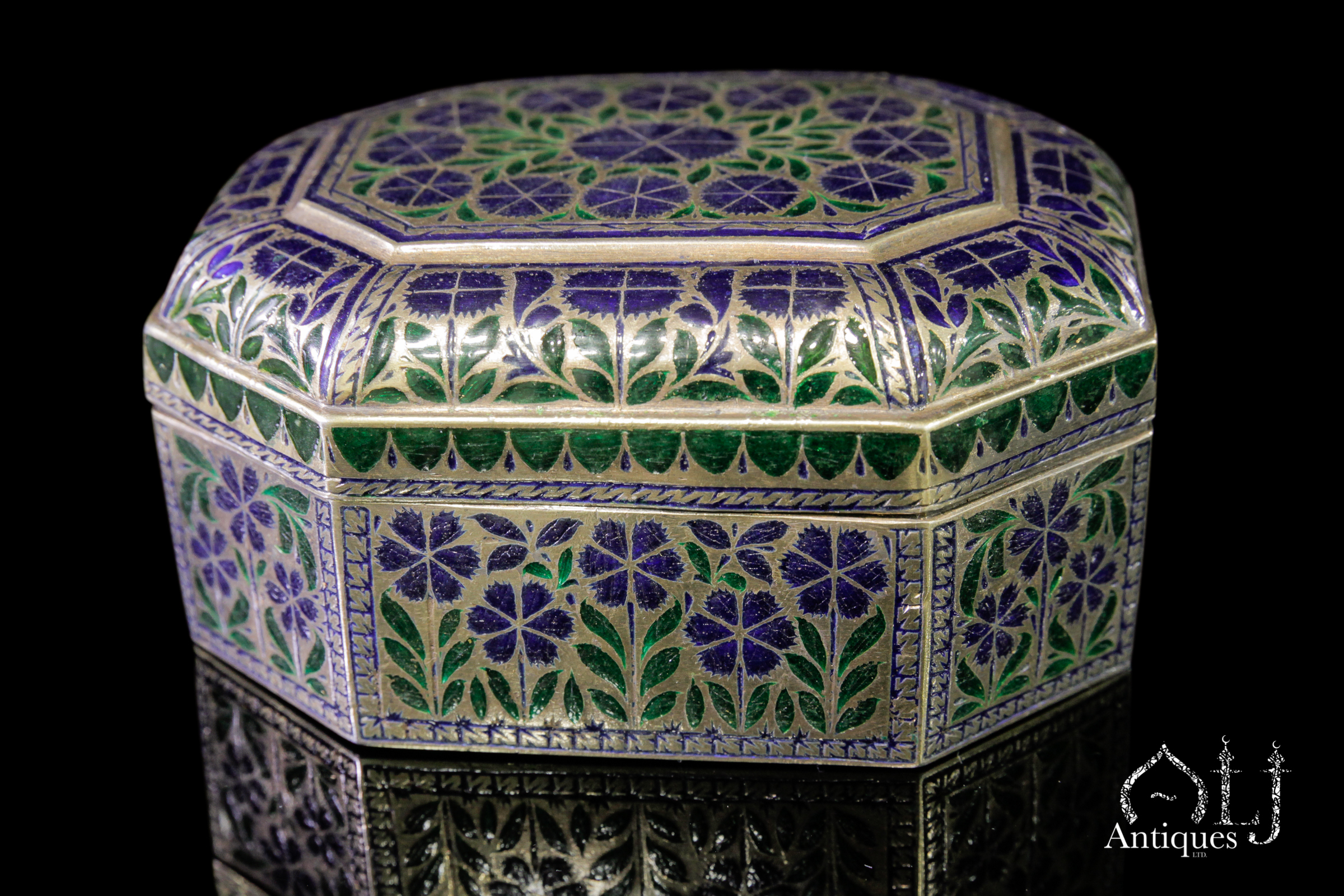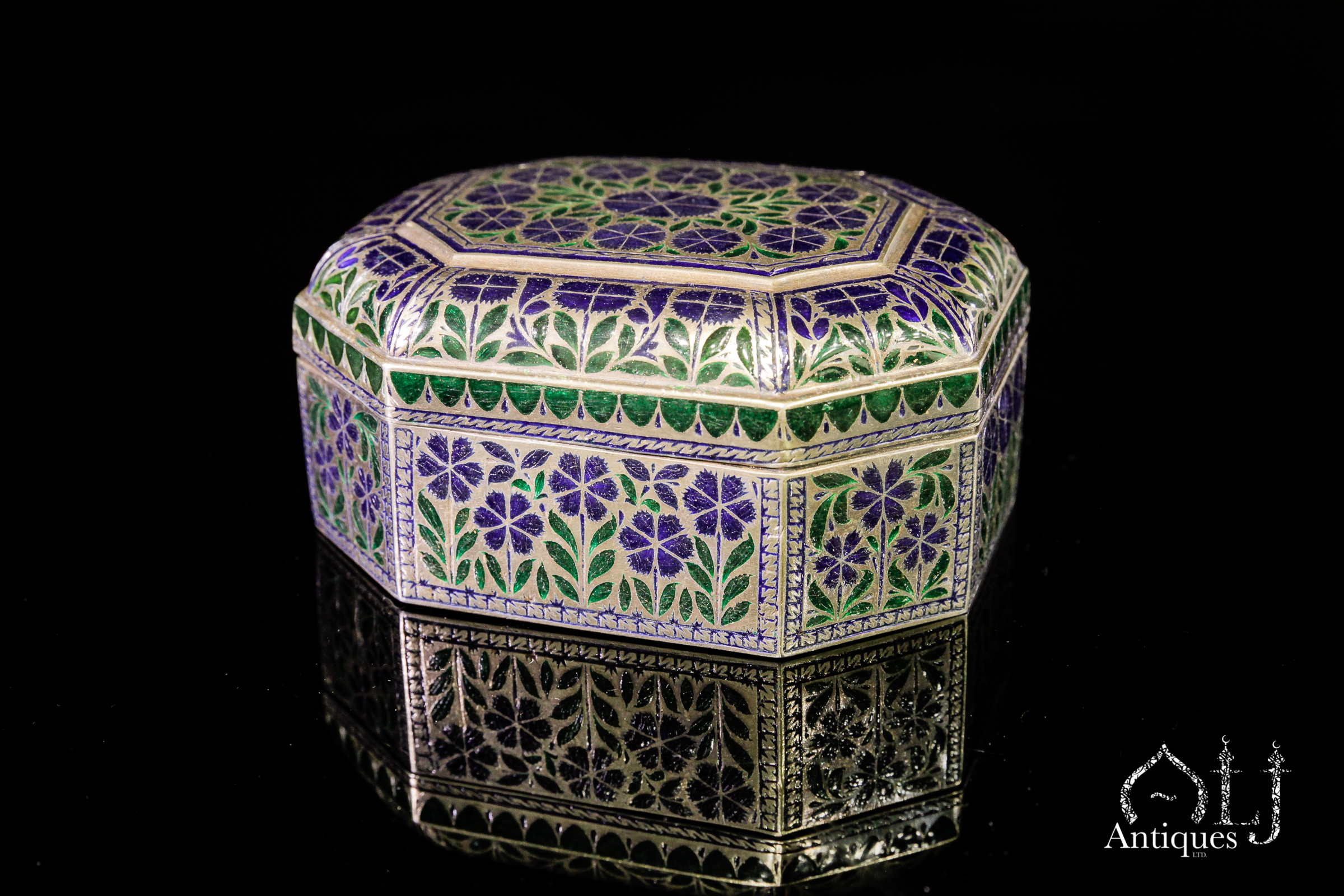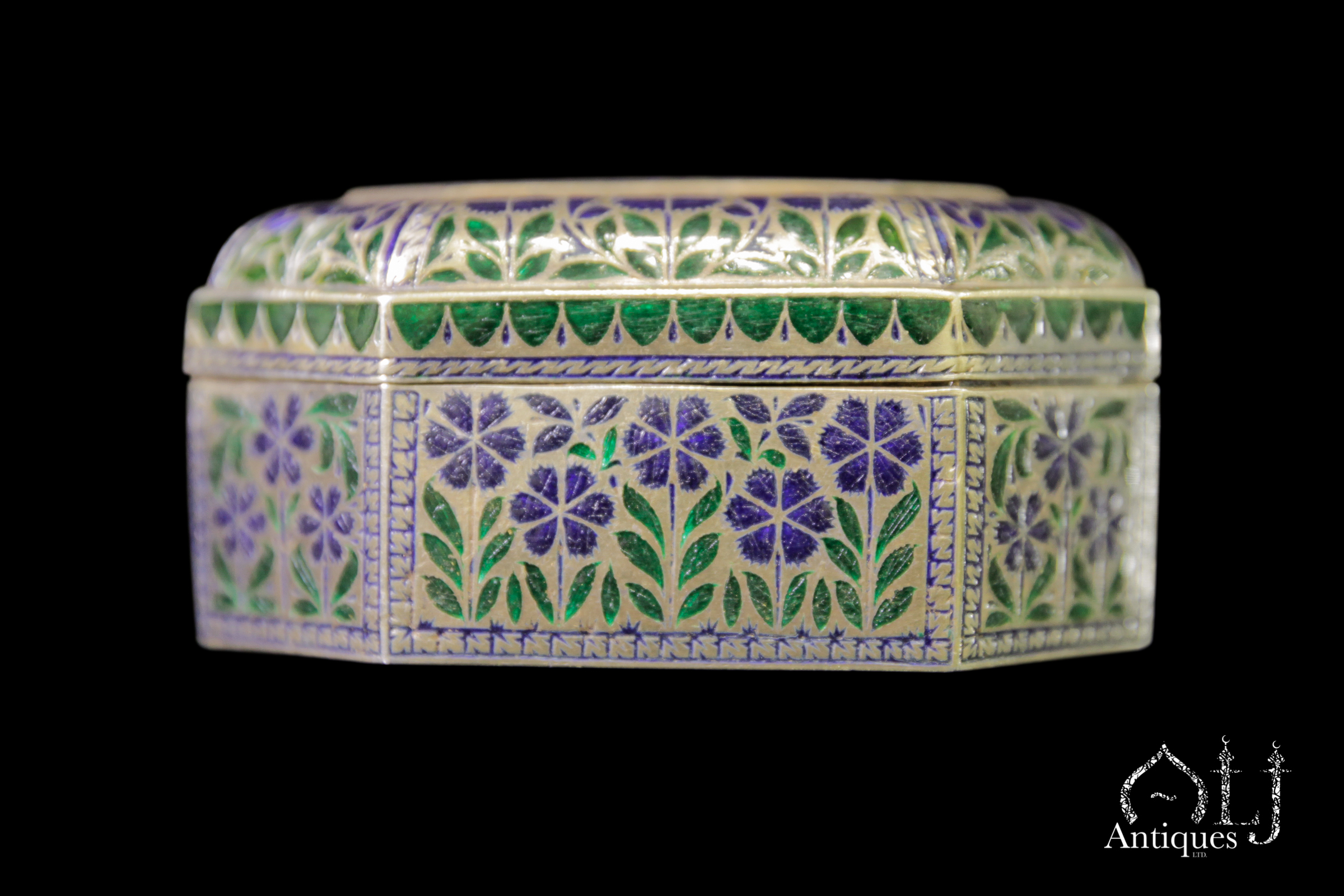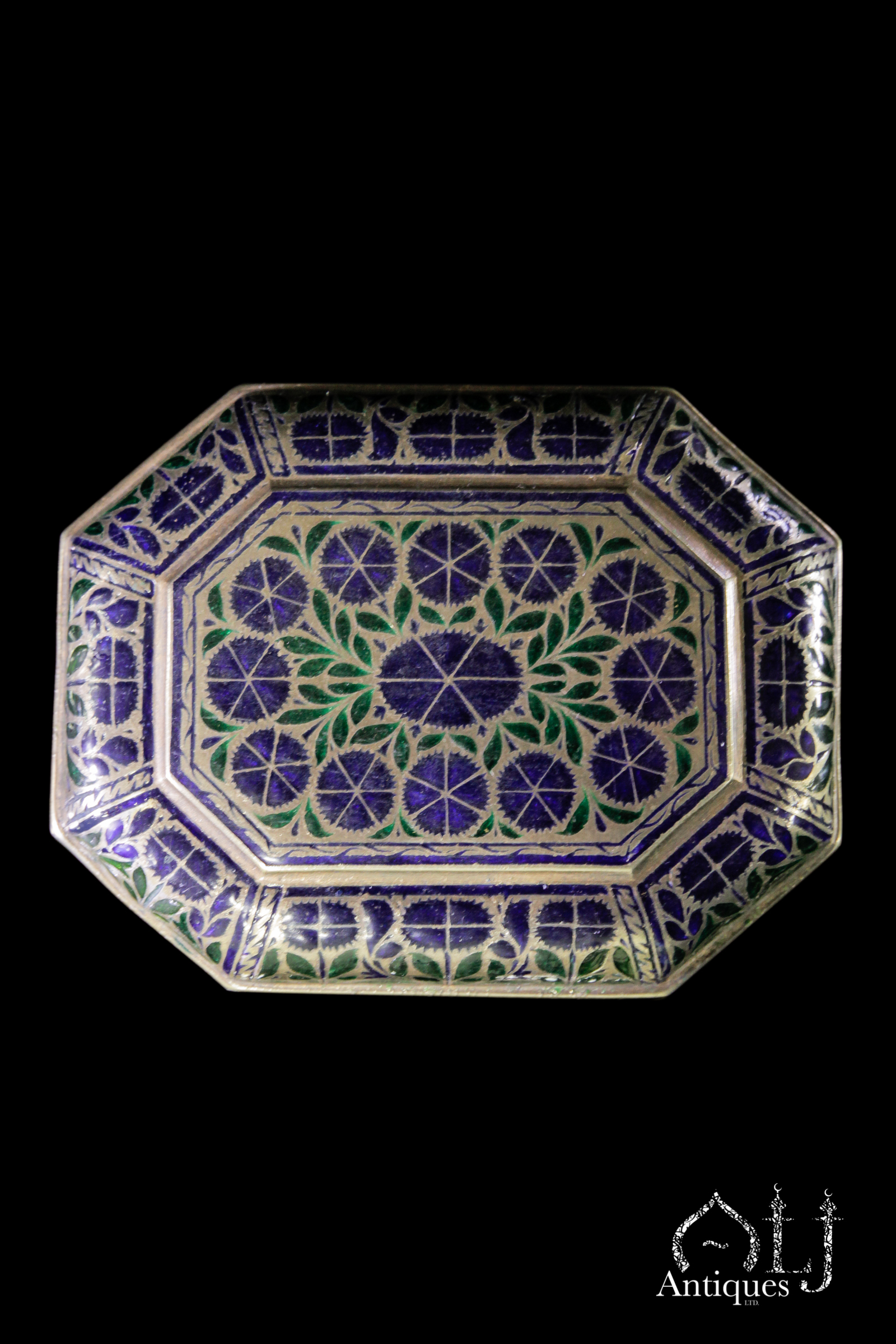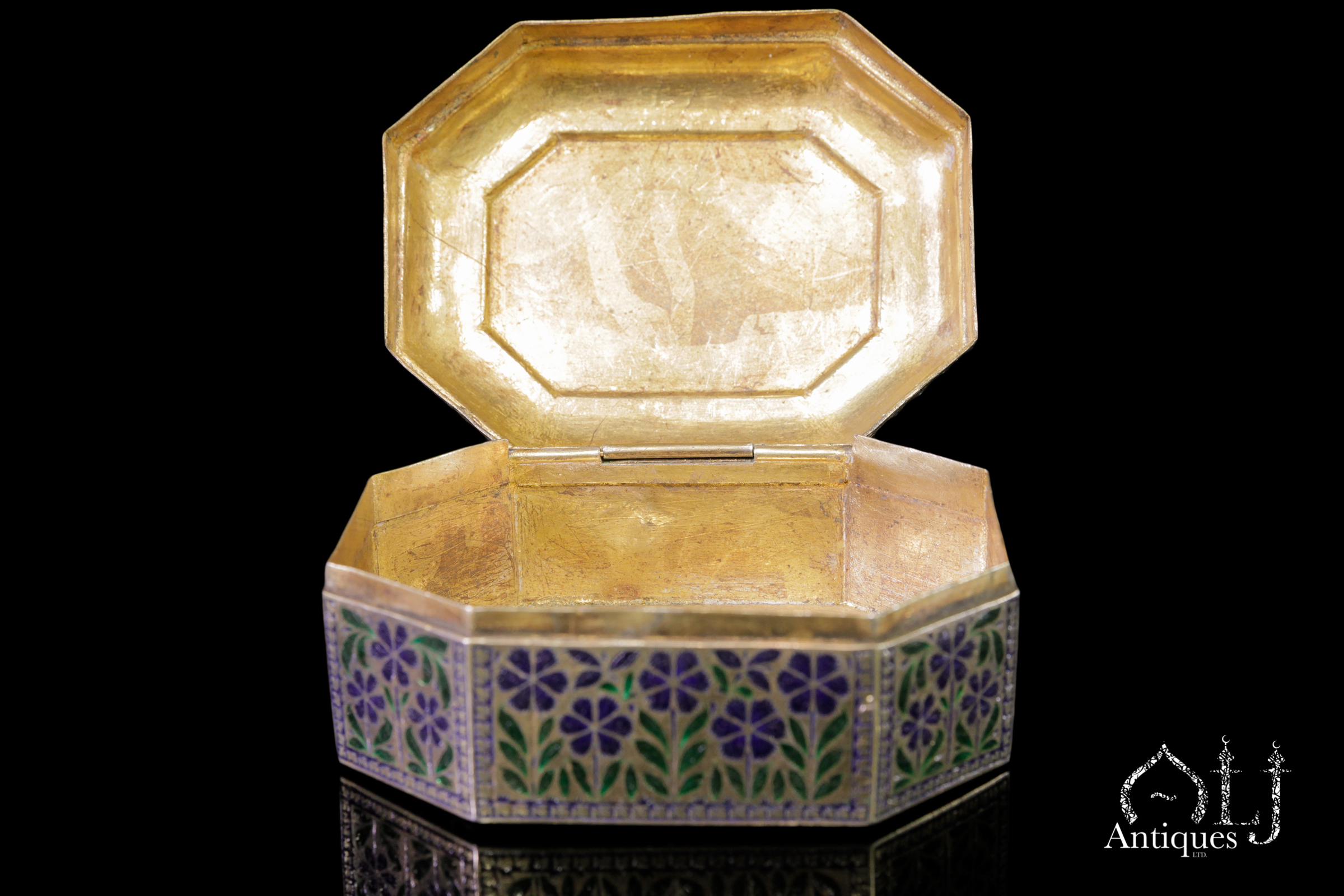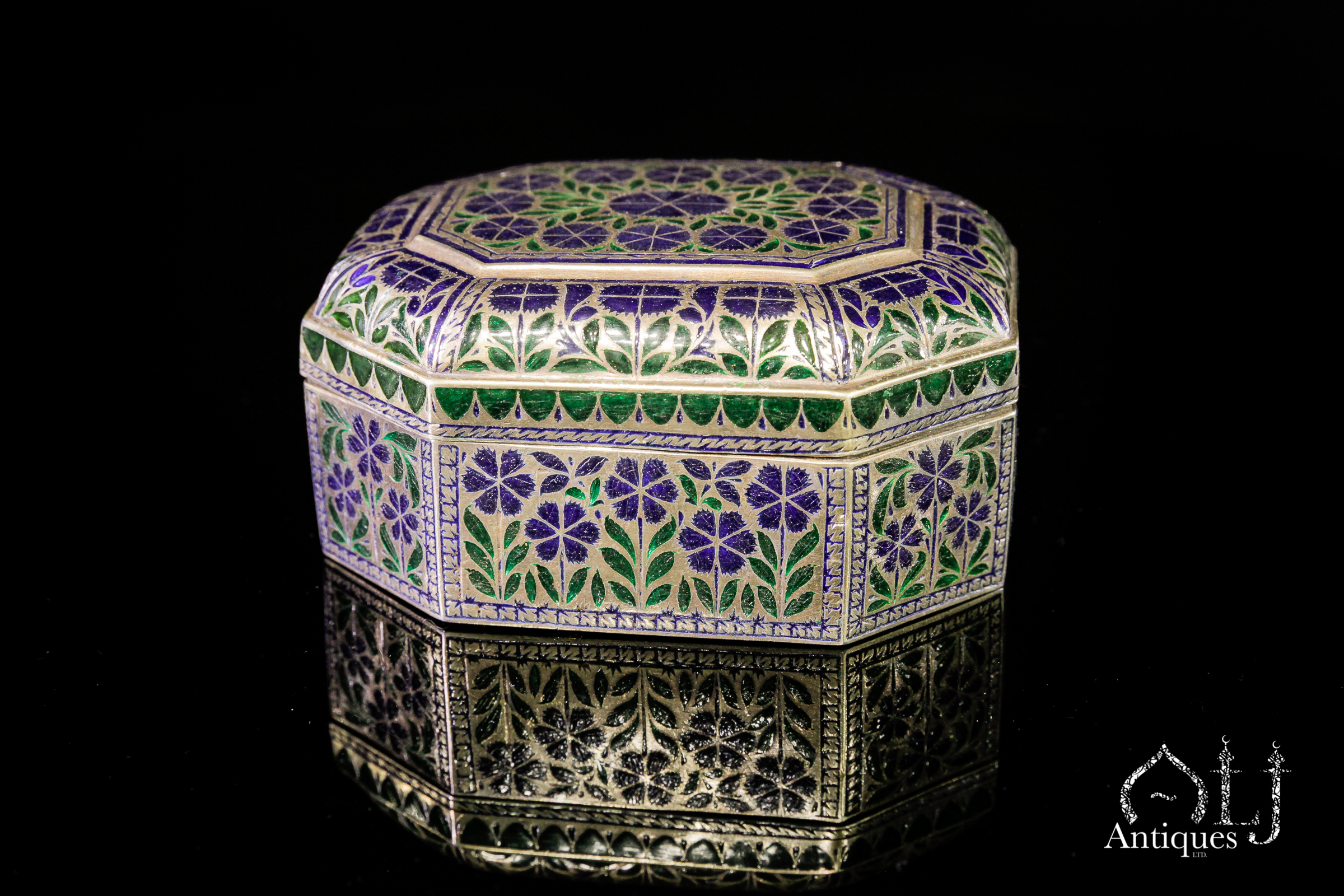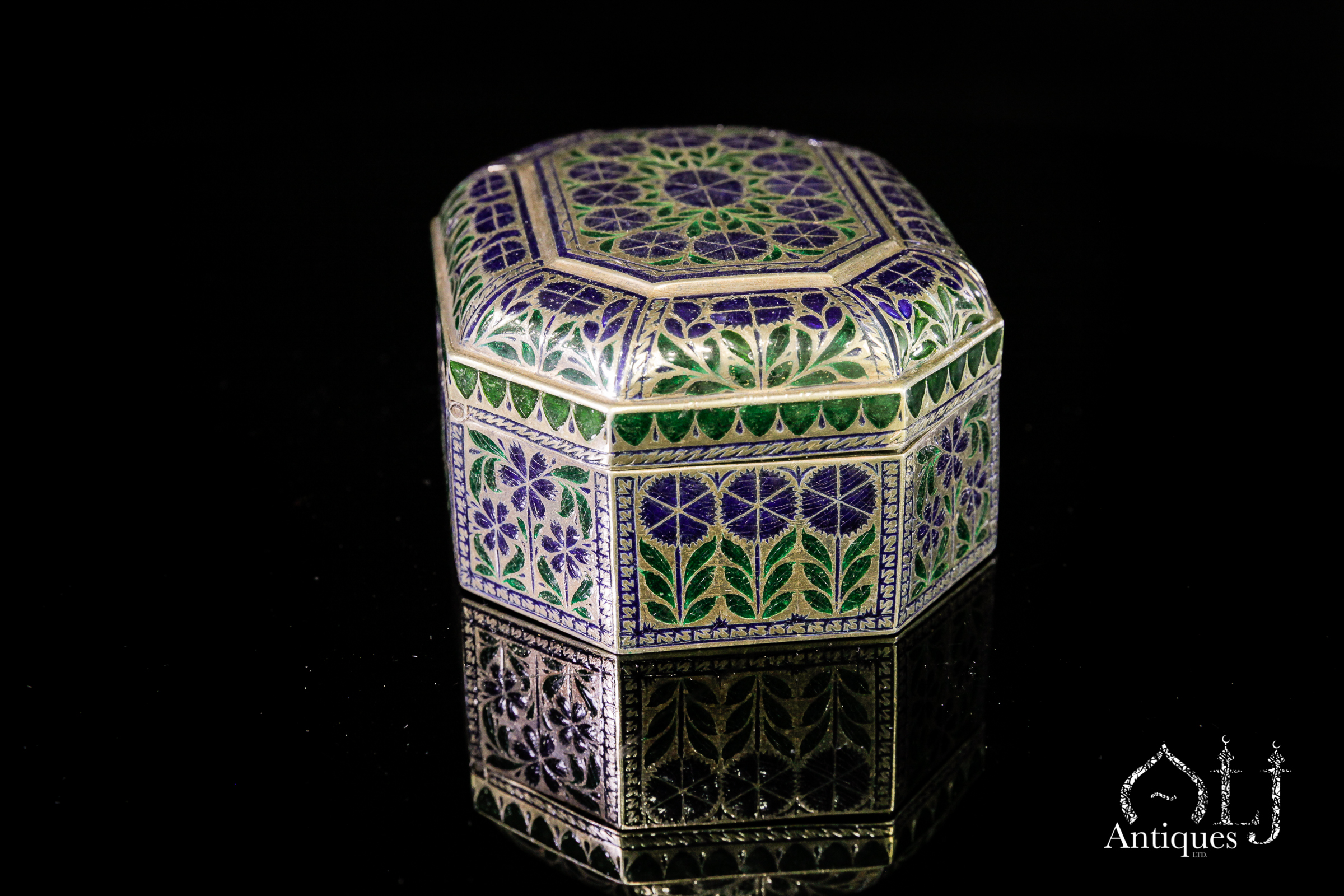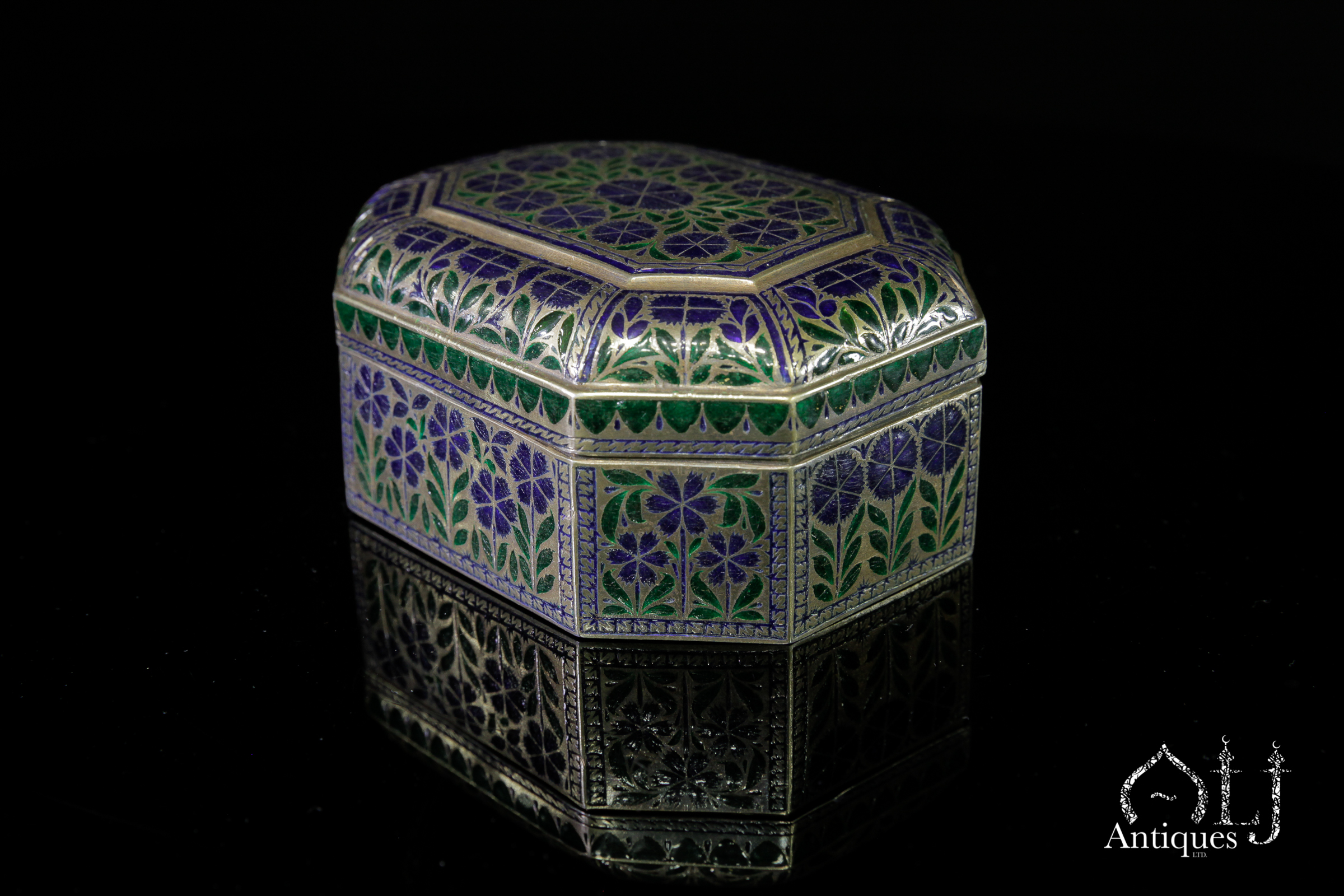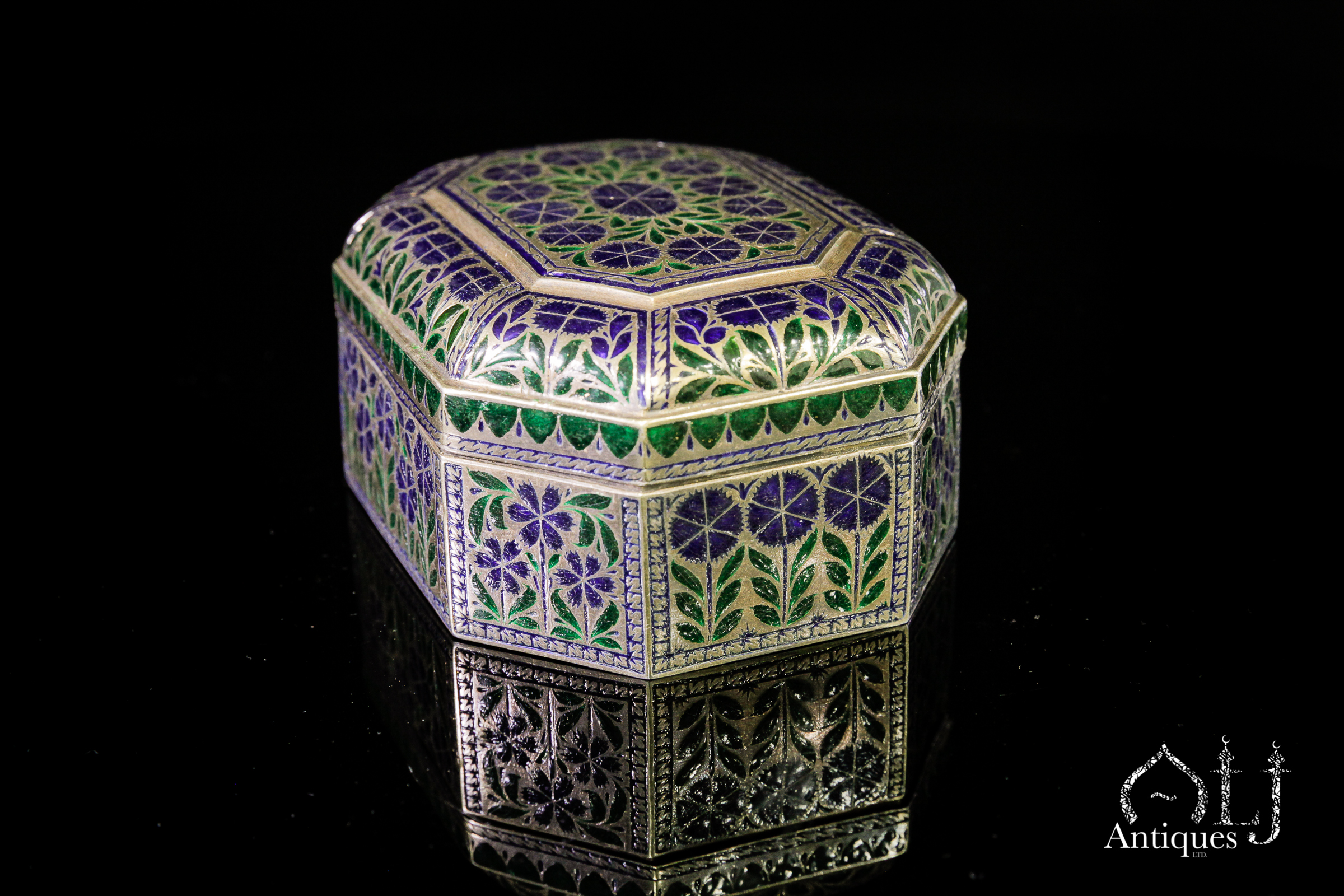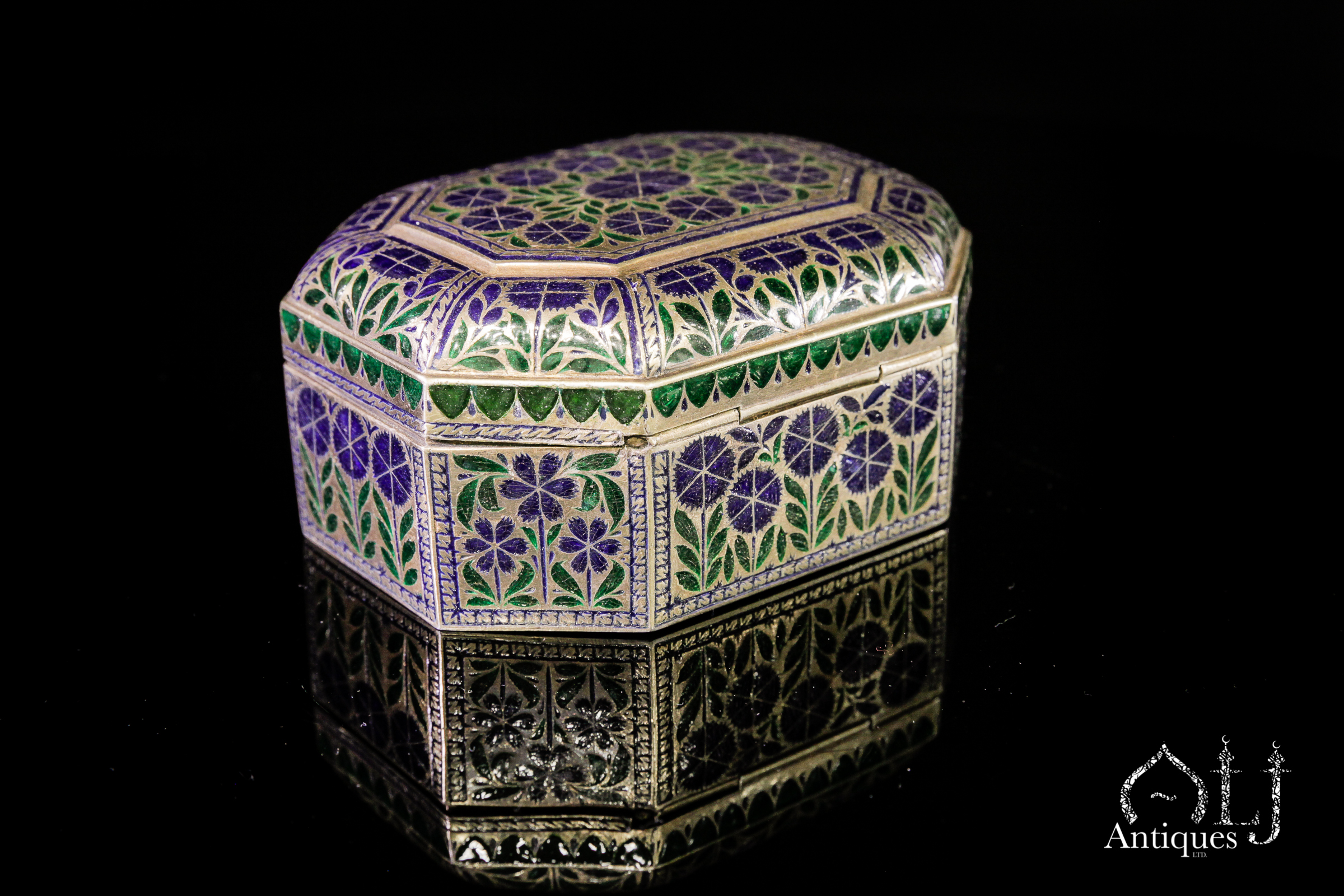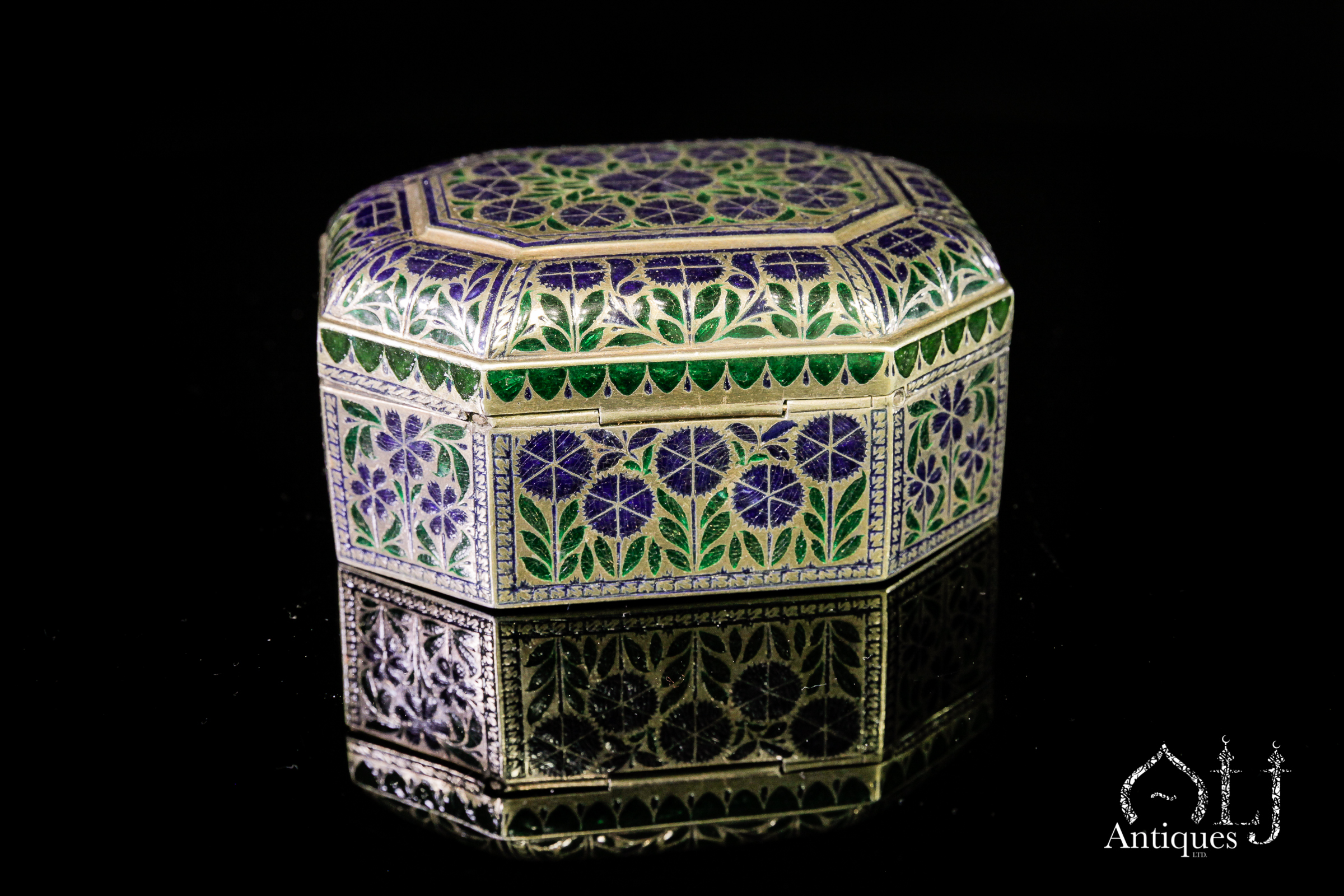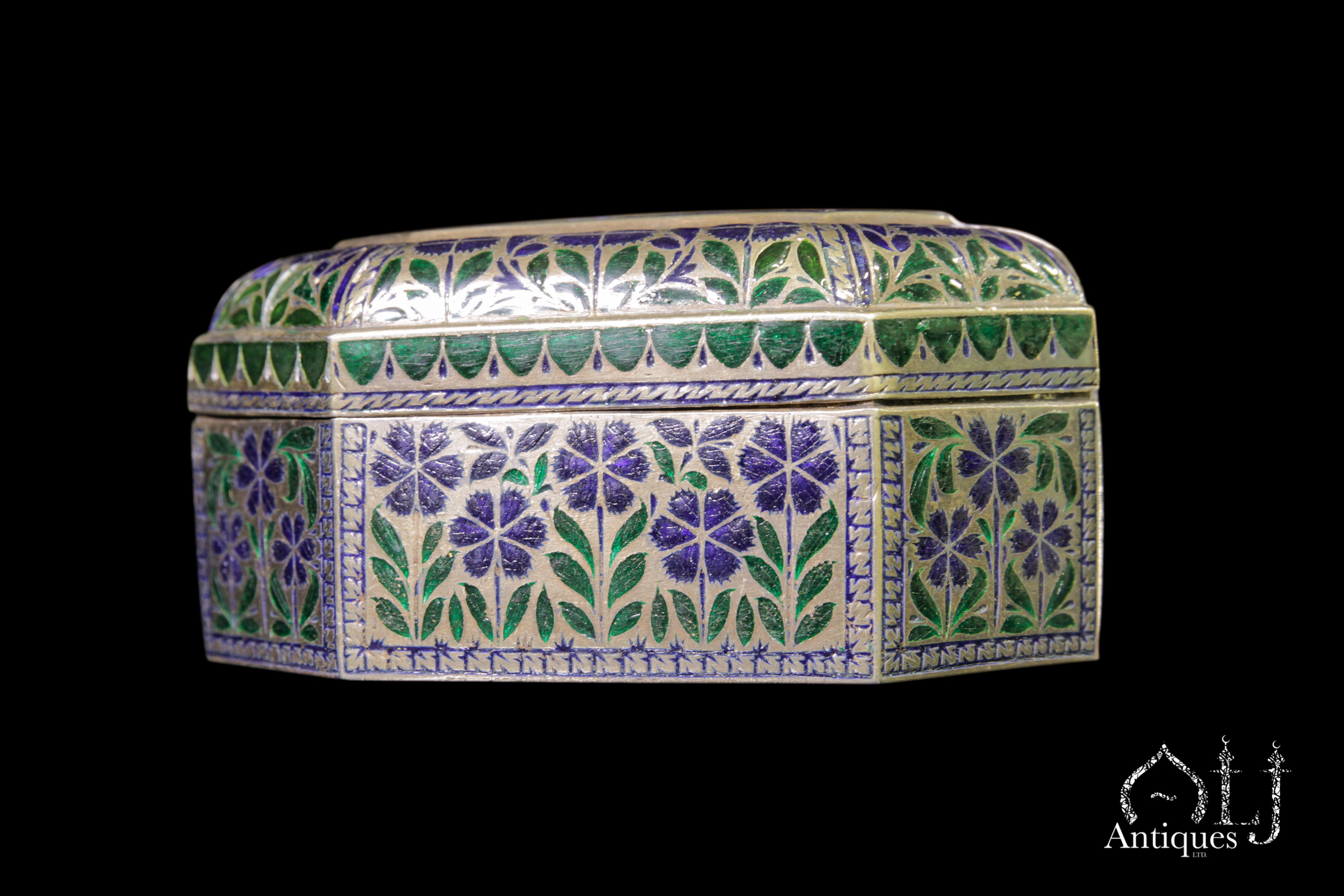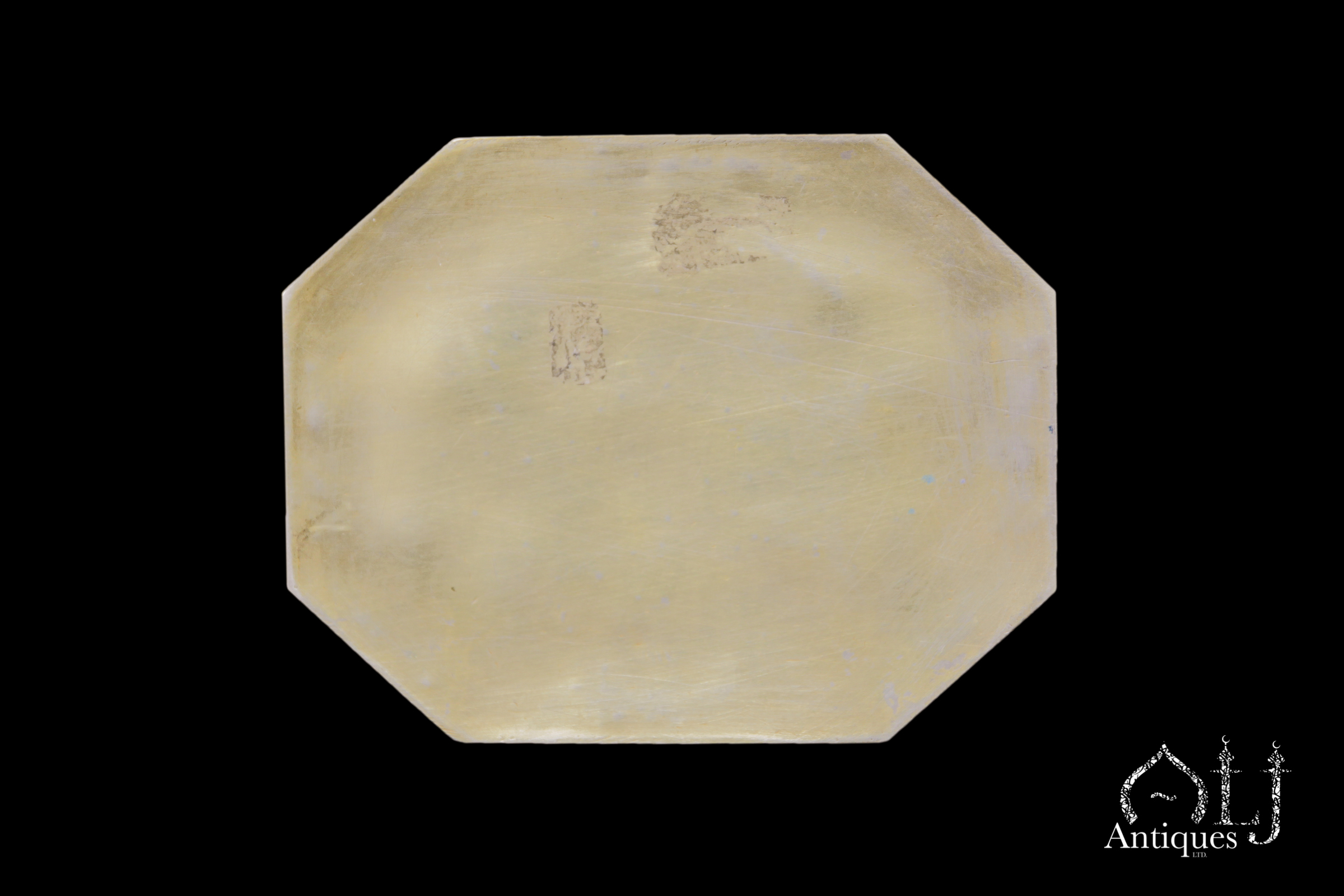Description
This fine and rare betel nut casket was more likely made in the Indian courts of Lucknow, and would have been used to store pan or paan—a stimulant fruit prepared with the leaves of betel.
This fine silver gilt octagonal casket is enamelled with fine translucent champlevé green and blue colours, and resembles an equally exquisite example found in the Victoria and Albert Museum, reputed to have belonged to Wajid ‘Ali Shah, the last ruler of the kingdom of Oudh who was deposed by the British in 1856 and exiled to Calcutta when his territories were annexed, and was later given to Queen Mary during the Delhi Coronation Durbar and Indian tour of 1911-1912 (for further details please see references below).
Early Indian enamelled metal Pandans come in a various colours and shapes, but mostly were produced in gold, silver & copper.
But in general the Lucknow enamelled Pandans like other high quality items such as huqqahs (water pipes) etc. combine the usual eclectic style, a rigorous mixture of geometry, fine floral and animals decoration, common to Mughal and Deccani courtly art.
There are various complex process involved in the production of our high quality Pandan including, the preparation and silversmithing in making the body of the casket, the fine engravings and decorations, the sophisticated enamelling and carefully firing techniques and finally the gilding of the Pandan.
Our present lot is part of a very few of this type that ever made it into the art market, as historical records point that up to our present today probably less than five similar Pandans of this quality have survived all of them were nearly the same size and of the same sort of enamelling.
The decorations of our present lot consist of long and tall irises and blossoming carnations contained within rectangular panels, some of which have six petals other are quatrefoil, which reveals the influence of both the Deccani and Mughal courts in India that was predominant during the 17th & 18th centuries.
The borders of the frieze are decorated in geometric patterns.
Condition: Very good, minimal enamel repair.
Dimensions:
10.4 cm width.
9 cm depth.
6 cm height.
References:-
– For almost identical Lucknow enamelled Pandan please see the surviving example of this type of exceptionally high quality that is published in various publication related to Indian Art, such as: Gold, Silver & Bronze: from Mughal India, By Mark Zebrowski,. London: Alexandria Press in association with Laurence King, 1997, Please see Pandan lot No. 79, catalogued on page 90, the Pandan casket that belongs to The Victoria & Albert Museum, Accession No. IM.30-1912, also for other 17th century similar types of enamelled Pandans but made out of copper please see lot Nos. 80, 81 & 82 illustrated in page No. 91.
– For other similar 17 century Mughal gold try and Pandan that shares the same shape, designs and flower decorations please see The Indian Heritage, Court Life and Art Under Mughal Rule, the Victoria & Albert Museum, exhibition from the 21 ApriL- 22nd. August 1982, ISBN 0 905209 20 6, lot Nos. 11c &11d illustrated in page 150.
– For other Lucknow enamelled silver objects, please see, India’s Fabled City, The Art of Courtly LUCKNOW, Lacma, By Stephen Markel With Tushara Bindu Gude, the Los Angeles County Museum Of Art, DelMonico Books, 2010, ISBN 978-3-7913-5075-2, Pages 198-212.

